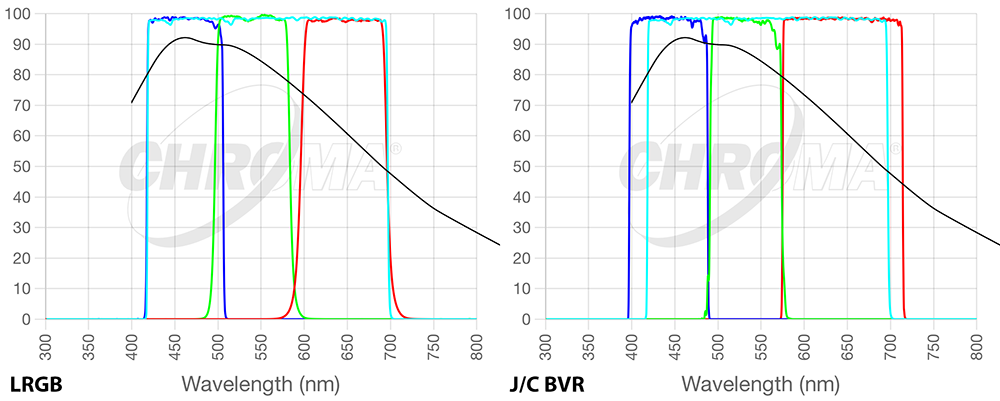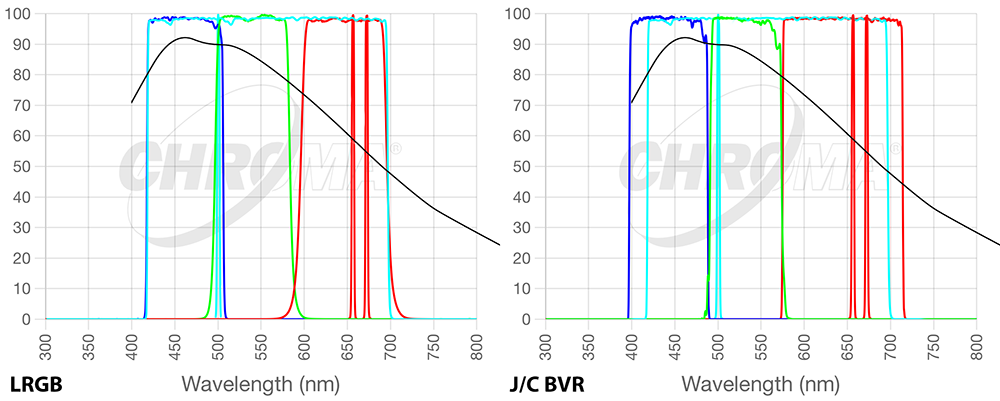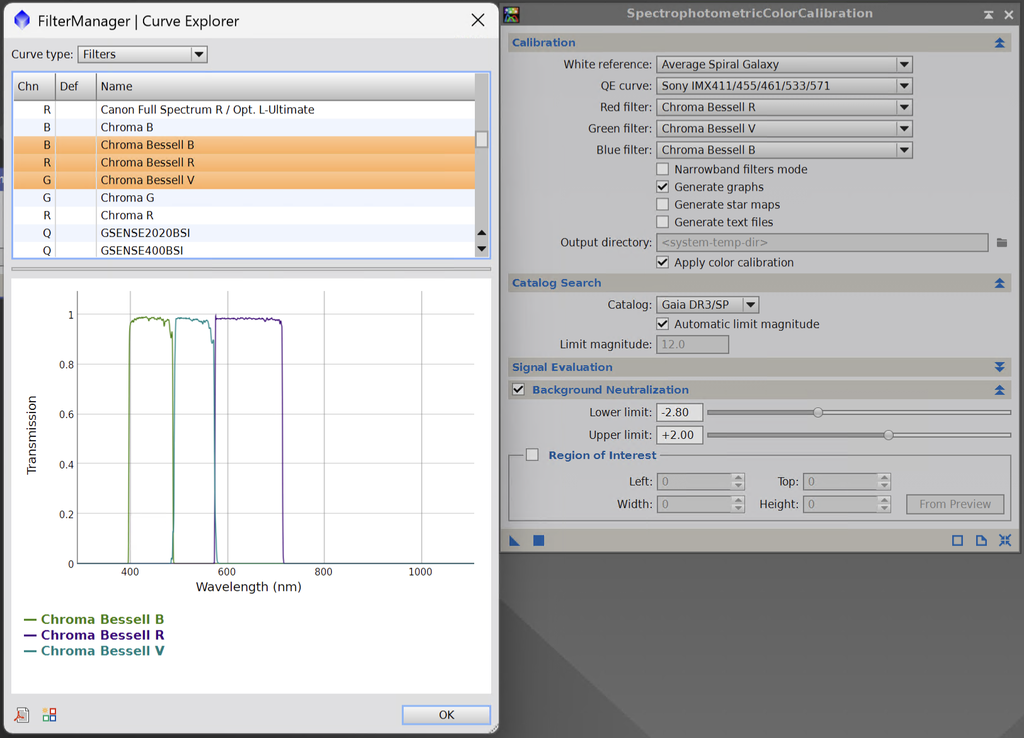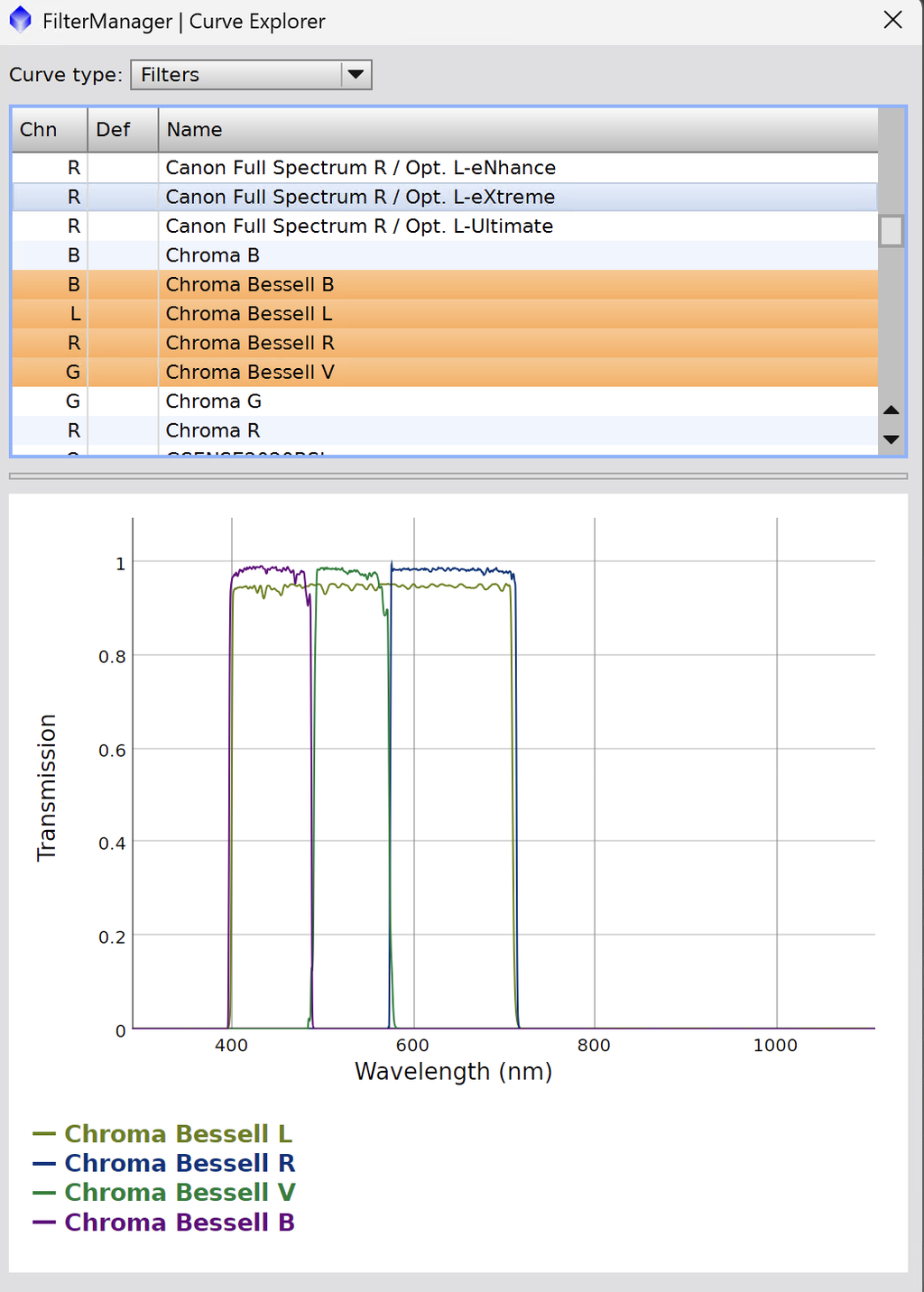I have recently been deliberating on filter choices for a new system I am putting together (it's a PlaneWave CDK20 that will be installed at Obstech). The system will predominantly be used for deep sky imaging. I was originally thinking about replicating what I have done previously on my other systems, and going with the typical broadband LRGB and narrowband HaOiiiSii filters.
While the narrowband choice is reasonably straightforward (and special thanks to @John Hayes for his kind feedback on the 5nm vs 3nm Ha debate), I started looking at the transmission curves of the RGB filters and it got me thinking as to whether they were really the best choice. In particular, the flat-top Johnson-Cousins BVR filters that Chroma sells (and calls [sic] Bessell filters), that are typically used for aperture photometry, seem to be rather interesting even for deep sky imaging. And seeing that @Wei-Hao Wang (CDK20) and @Wolfgang Promper (AZ1500) have both imaged with J/C BVR filters and that their images look spectacular gives me more confidence.
I would love more thoughts from the community on my observations below. Have we been sticking to RGB simply because of arcane / legacy reasons? Have other people specifically used the J/C flat-top filters before and have had positive or negative experiences? (Note a few other brands make Bessel filters, but they are not necessarily "flat-top").
Comparing the spectral bandpass, these are my observations (note that the black curve is the QE curve of IMX455/461 sensors, and the cyan line is the Luminance filter):
+ The BVR filters have slightly wider bandpasses in the red and blue regions.
+ There is very little overlap between each of the bands with BVR unlike RGB and the falloff is rather steep.
+ There isn't ~20nm band gap between green and red, which IIRC is there to filter out light light pollution from sodium-vapor lamps, and not really useful from a remote Bortle 1 site.
- The only negative I can think of is that the luminance filter doesn't have as perfect of a match, but creating a superlum with L, B, V and R should mitigate that issue.

And when considering overlap with narrowband filters for continuum subtraction, there is possibly a slight advantage to the BVR filters in that Oiii bandpass falls squarely within the V filter bandpass, while with RGB, both G and B oddly share the overlap in their falloff regions.

Thanks,
Ani




